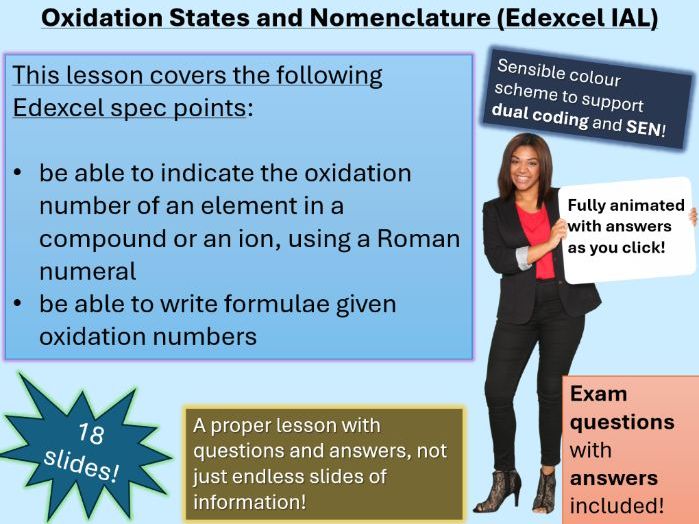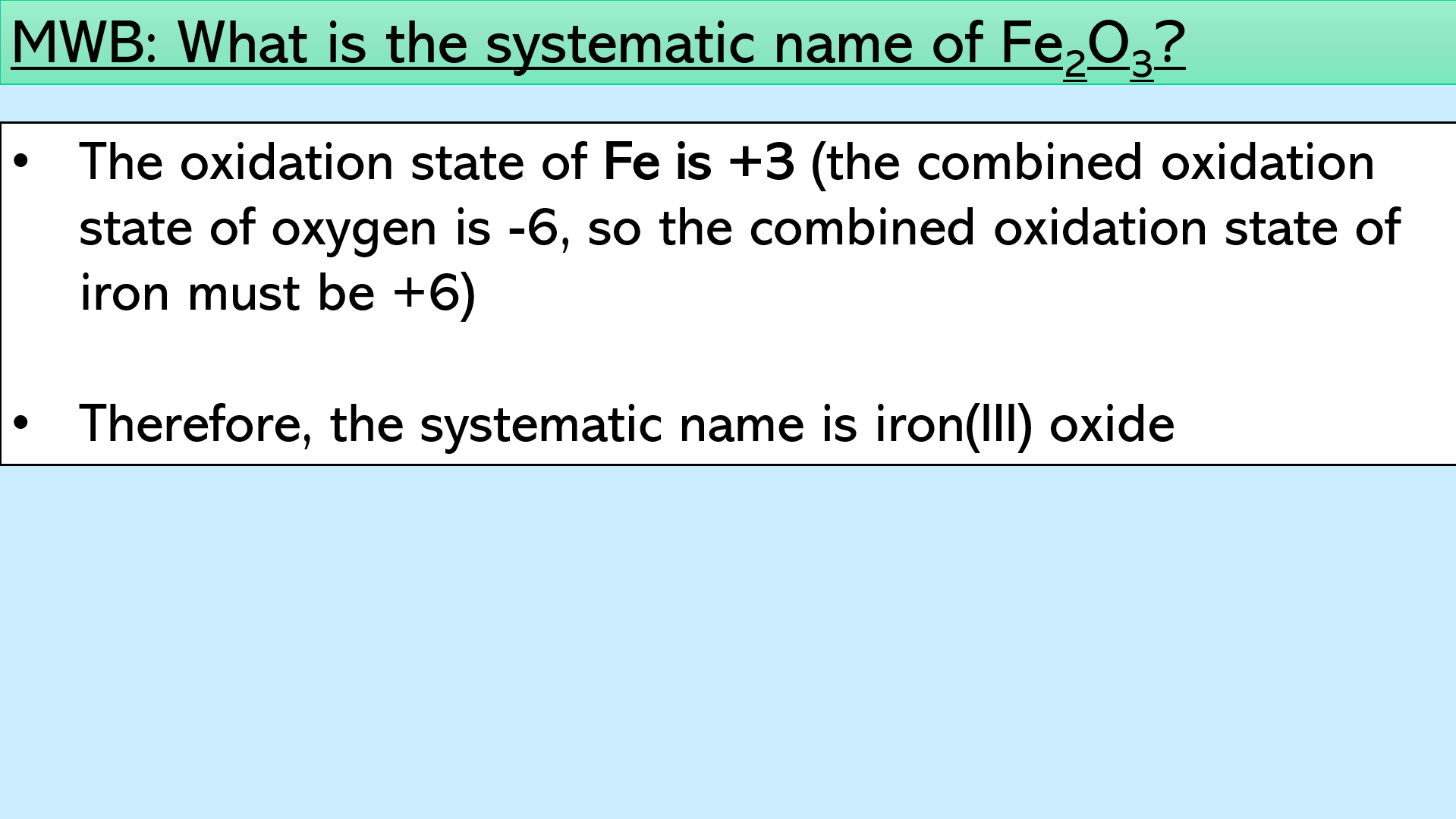


How can oxidation states be used to work out IUPAC systematic names for compounds? What do roman numerals represent in a name? What is an oxoanion? All this and more covered in this comprehensive lesson with questions and answers! This is a Year 12 A level lesson for Edexcel International Unit 2 – WCH12, but it can also be used for all UK exam boards. All the slides in this lesson are fully animated and include answers to every mini plenary question and exam question. The breakdown of the slides (which are best opened on Microsoft PowerPoint) is as follows:
Slide 1 - Title and 5-minute starter. The starter is a grid of four questions entitled ‘last week, last lesson, today’s learning and future learning’. Use this generic slide for all of your lessons by simply changing the questions and the answers each time.
Slide 2 - Lesson objectives (see thumbnail image)
Slide 3 – Introduction to the variable oxidation states which transition metals and non-metals like nitrogen can have
Slide 4 – What are systematic names and how should roman numerals be used?
Slides 5 – 7: Worked examples. Students are encouraged to attempt example 2 and 3 on a MWB (mini whiteboard) first
Slides 8 – 10: Students are presented with a table showing the formulae of different oxoanions and their non-systematic names, e.g. phosphite. Perchlorate, hypochlorite, etc. This will be important for the next activity. Print the table for them by printing slides 9 – 10
Slide 11 – Independent practice – students are given formulae and non-systematic names and must give the IUPAC name. Answers animate on the screen as you click
Slides 12 – 14: Students will be taught how to deduce the formula of a compound from the systematic name. There is a detailed, worked example and an independent practice task with answers
Slides 15 – 18: Exam questions with mark scheme answers (included with the purchase of this resource)
If you have a positive experience with the resource, please leave a positive review! This really helps promote our store! Thanks!
Something went wrong, please try again later.
This resource hasn't been reviewed yet
To ensure quality for our reviews, only customers who have purchased this resource can review it
to let us know if it violates our terms and conditions.
Our customer service team will review your report and will be in touch.